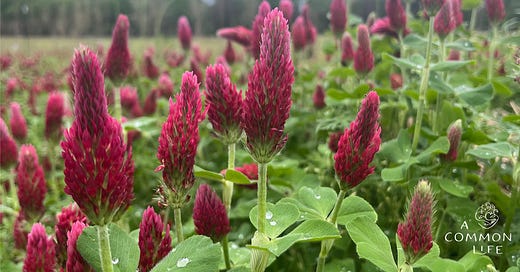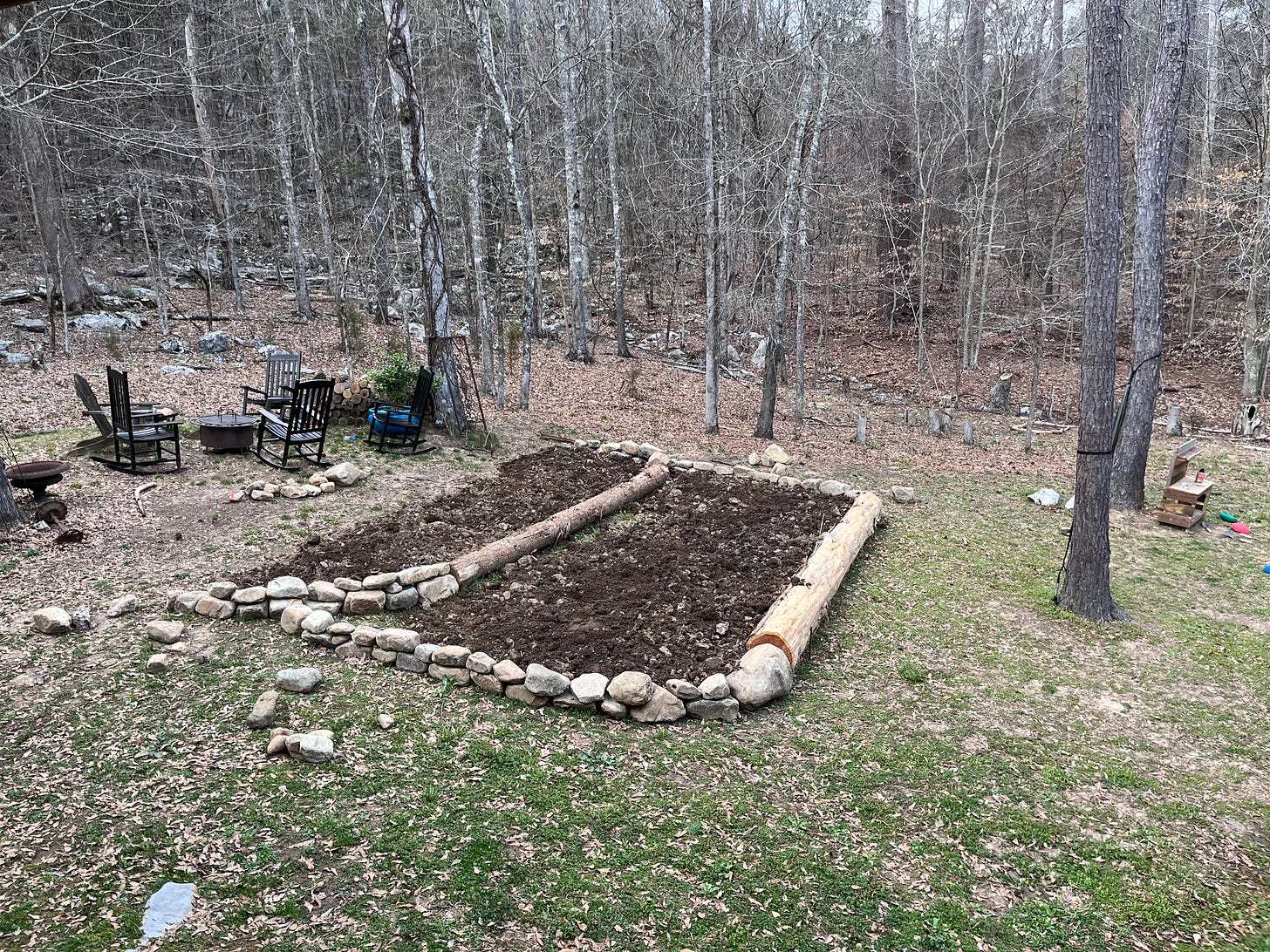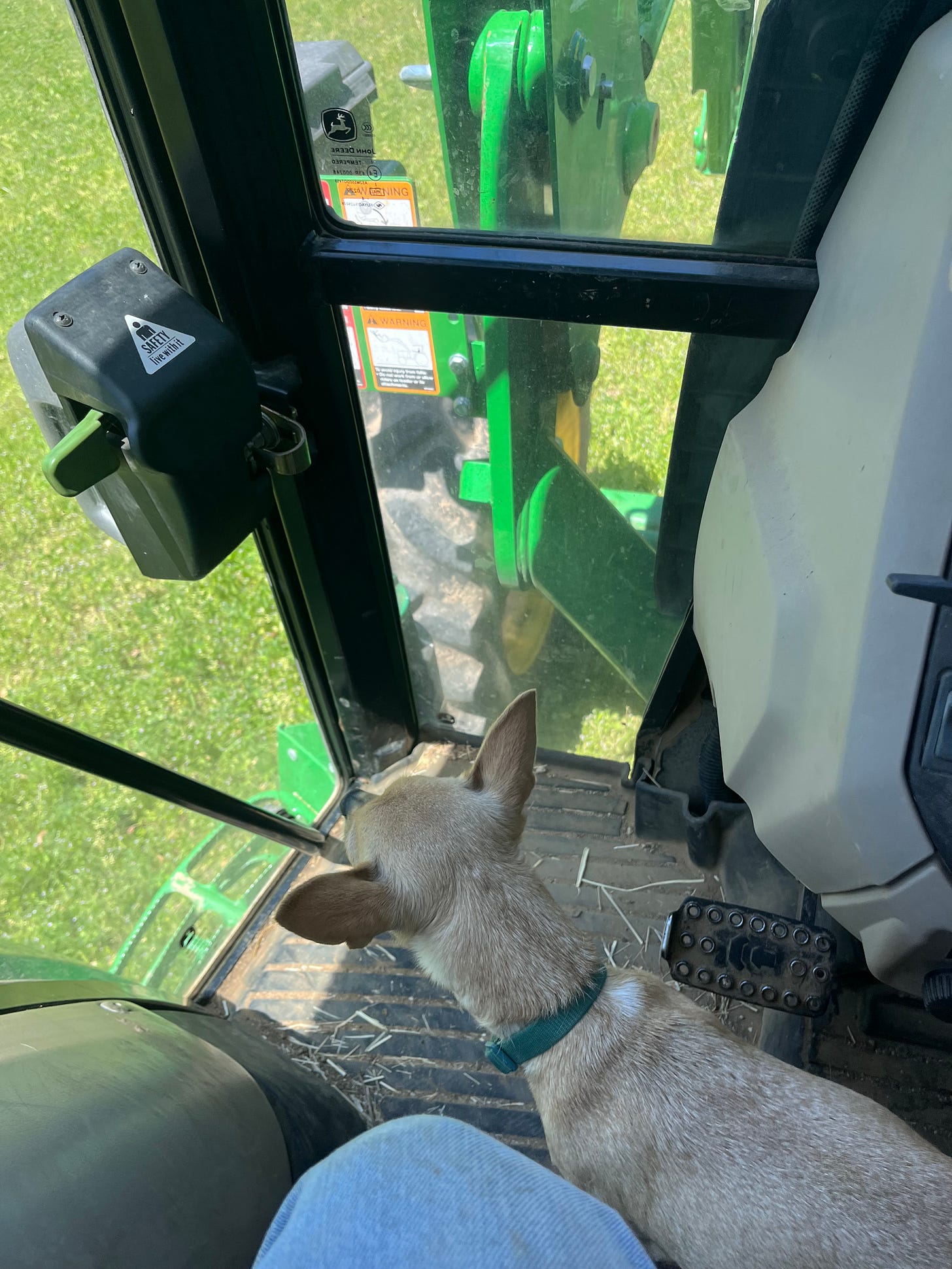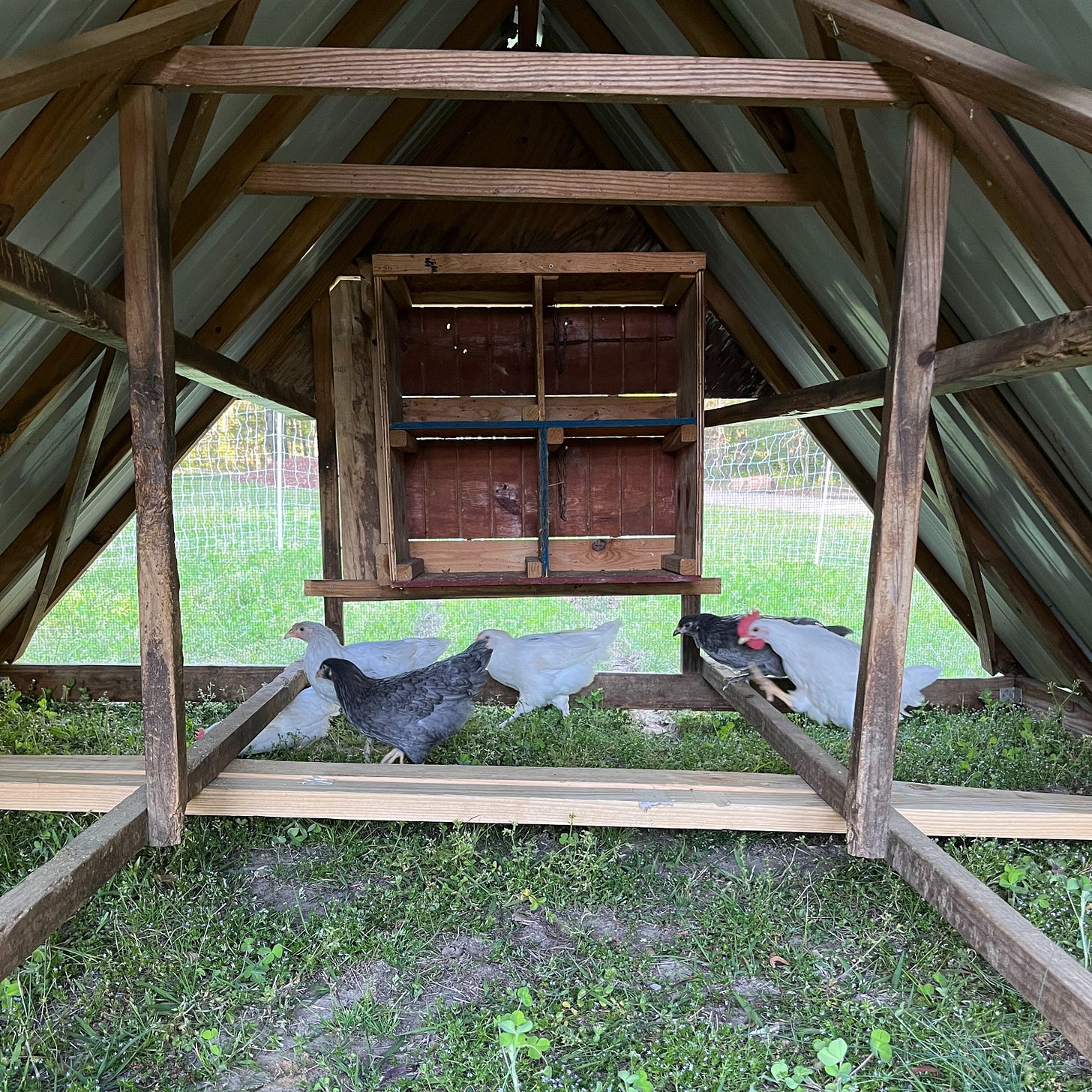Happy Plants
I listened to Jim Elizondo, a researcher and a seasoned rancher, be interviewed in a podcast recently and got fired up. Healthy humans need healthy plants and healthy plants need healthy soil. Plants are only as nutrient dense as the soil in which they are grown is nutrient dense. However, it doesn’t stop there. Those nutrients have to be in a form that plants can uptake.
How do we get soil that is dense with nutrients ready to be absorbed by plant roots?I’m so glad you asked!
You know how in our digestive tract, we rely on bacteria to help us digest and absorb the food we eat? It is no different with plants. Think of plant roots as an inside out digestive tract. Instead of being enclosed, a plant’s digestive tract is outward facing and exposed to the soil in which it is anchored. Plant roots live symbiotically with bacteria (and other microbiology) in the soil. The roots of plants will secrete exudates in the form of sugars and fats to feed and attract bacteria. This bacteria will in turn feed the plant by exuding digested, stable carbon materials (think end-product of broken down plant and animal material) into the soil, right around the plant roots. Now, you guessed it, this material is full of the nutrients plants need and it is in the perfect form for plants to take it up.
But here is an important point and one that I was reminded of when listening to this podcast. Plants, when cut at the base, pull energy reserves from their roots to fuel growth above ground. If a plant is repeatedly cut at its base (think of a pasture setting where cattle keep coming back to eat the plant when it grows) then it will have no excess energy (sugars/fats) to exude into the soil to feed the microbes in the soil. This means minimal microbe exudates, which means minimal stable carbon, which means minimally available nutrients for plants where they are most needed (right by the roots). However, if a plant is allowed to reach full maturity, it will begin to rapidly release root exudates. This starts the process that ends in stored carbon in the soil and available nutrients to the plants. Right where they need them.
What are the implications of this? Well, it depends on context and what you are trying to accomplish. If you are managing a grazing system, it means you need to let your plants recover after being eaten. However, if your goal is to build your soil’s stable carbon content (the key to a healthy soil) then you should allow a portion of your grazing system to reach full maturity. This means you don’t graze it for a whole season, allowing the plants to pump excess sugars and fats into the soil, feeding the soil biology which will, in turn, create stable soil carbon. These fully mature plants, are what Jim Elizondo calls “Happy Plants.”
The Orchard
I’m really enjoying being in the orchard right now. We have peaches, mulberries, pears, plums, and crabapples fruiting. The areas where I spread composted manure last year is visible by the large, dark green patches of clover that spring from it. It is a bit unruly in the orchard. It hasn’t been mowed this year, and the old hay bales I placed by each tree look a bit haphazard, worn-out with off shades of brown, yellow, and black. The mulch I dumped at each tree is still piled up where I put it and doesn’t look neat at all. My goal was never neat. The goal was health and, the orchard looks healthy. The trees are growing magnificently and so far, I haven’t had any disease issues. This can change quickly, and when it does, I’ll observe and try my best to adapt and mitigate. But right now, I’m soaking up the beauty and the hopeful outlook.
The Terraced Garden
I completed the upper portion of the terraced garden. I’m not sure about using logs anymore. Using rocks for a border is time consuming, but it’s way prettier and in a few years, I think I will be glad I did. So, with that said, the rest of the terraces I will likely do with rocks from the creek and not use cedar logs.
I brought some soil over from another area of the farm and back-filled the initial terraces. Worked out great. Before planting anything though, I’d like to add some peat moss. I’m thinking I’ll avoid adding any bagged compost. I keep hearing negative things about mass produced bagged compost. Mainly, the fact that it comes from confined animal farming operations (CAFOs) which use copious amounts of antibiotics in their operations. There is also the PFAS/PFAO problem which is pervasive. I’m not suggesting I am done with bagged compost, but for now I’m avoiding it.
In the terraced garden area I have planted 7 trees. A mix of pears (2), apples (3), and figs (2). Plus, a gooseberry.
This garden will be primarily herbs, flowers, perennial (native) plants, and mixed in will be different kitchen vegetables. The vegetables that need more space and the ones we want to grow much more of will go into the pasture garden. (See below).
The Pasture Garden
When we first moved out to the farm in 2014, I decided to put the market garden on the eastern edge of the property. This was due largely to the fact that the infrastructure was already in place in this area. It made sense. However, the soil was densely occupied by sandstones. The average size was bigger than a baseball. I’d pull rocks for days only to find a new batch after a good rain. It felt like the garden was growing rocks.
There was another option on the farm for a garden plot. On the western side. For the past few years it has been kept as a food plot (See below). The soil in this area is rock free and a dark shade of brown - beautiful sandy loam.
Morgan has mentioned multiple times that she wants us to grow some staple crops like green beans, garlic, onions, potatoes, and sweet corn. The problem is we don’t have space near our house. The silvopasture won’t work and the terraced gardens aren’t big enough for these types of crops. In the process of preparing and seeding the food plots I decided it would indeed be a great spot for a garden where we could grow some crops that require more room.
The plan is to prepare a seed bed in a long strip through this field. This strip will be roughly 150 yards long and in the middle of the food plot field. I’ll mow around the edges to make it accessible. In this strip of garden, I will plant crops that take a few months to grow and take up lots of space. This field won’t have irrigation, and it won’t be protected from wildlife. So, I will need to plant enough to share. Each year I will move the strip to a different spot and likely won’t revisit the same strip for a decade or more.
The Food Plots
These plots are on the western side of the farm. As mentioned above this area has excellent soil and is a great spot for growing crops. The last five years or so this area (about 3 acres) has been planted in conventional GMO corn as a food source for wildlife. The process has gone like this: In early spring spray herbicide; disc the field to prepare a seed bed; plant corn and fertilize it with a water-soluble chemical fertilizer; wait until the corn, grasses, and weeds sprout, spray it all again with an herbicide to kill everything but the corn that has been modified to withstand the herbicide; and lastly, let it grow, mature, be eaten by wildlife, and or mold until next spring when it starts all over again.
I’ve never been a fan of this (for several reasons) and upon moving back to the farm I was eager to change things up. Instead of planting corn I decided to plant a mixture of soybeans, buckwheat, sunflowers, millet, cowpeas, sudangrass, sorghum, and sunnhemp. This mixture will attract a broad array of wildlife (including pollinators), feed the soil, and (hopefully) look beautiful. In late summer, instead of letting the field sit, I will cut down the summer crops and drill (a fancy word for direct seeding using a specific no-till tractor implement) a fall/winter cover crop. This will continue to attract wildlife, feed the soil, and hold it in place during the heavy rains we will inevitable get during the fall, winter, and early spring.
This may seem dramatic, but it was pure bliss discing and seeding these fields the other day. The skies were blue, the temperatures were in the upper 60s, and I couldn’t have been happier. If I was going to be by myself, there was no where else I would have rather been.
The Silvo-Pasture
Like the orchard, I also planted crimson clover in the silvopasture late last fall. It doesn’t look so great. This pasture is struggling. This isn’t ideal but the good news is I get to restore it and watch it come alive. Step one in this journey was seeding the clover. I had some leftover seed (a blend of soybeans, cowpeas, millet, sunnhemp, buckwheat, sunflowers, sudangrass, sorghum) from the food plot planting and figured “why not?” So, I over seeded the clover with this mixture. This mix includes species that will fix nitrogen in the soil, bloom and attract pollinators, send roots deep into the soil and break hardpans, and provide food for all kinds of different birds. Covering the soil with living plants means I am maximizing the leaf surface area in the orchard and silvopasture which means I am maximizing the lands potential for harvesting the suns energy. That energy will be used to build carbon above and below ground and will feed the microbes that will feed the plants I am trying to grow.
In this silvopasture I have planted 9 trees. Pears (2), Apples (3), and Mulberries (4). I have also planted some oak trees along the edge of the field. I started those by seed. I’m super proud. Can’t wait to say that in 30 years when my grandkids are climbing them.
Oh, and we also got chickens. That is step 2 in regenerating this pasture.
The Chickens
We had a neighbor reach out and ask if we wanted some chickens. She hatched a few out and had too many. We answered “Yes!” That meant I had to get the old pasture coop fixed up and get the old electric netting fence out and see if my solar fence charger still worked. Thankfully, everything went smoothly and in a matter of a few days we had chickens again. They are two months old. They will be moved throughout the pasture with the purpose of cycling nutrients back into the soil.
The Woods
The woods behind our house have rapidly changed. Previously bare, they are now adorned with various textures and shades of green. I’m slowly identifying the plants dotting the floor and the shrubs which occupy the understory. Eventually I will begin to remove many of the smaller saplings that are growing throughout this little acre of woods. Perhaps I’ll remove some of the shrubs too. I also need a few good trails to walk without having to worry about brushing up against anything. Why? Because Turkey mites. That’s why. Also, having a clear walking trail is nice.









The red clover is beautiful!
There are so many exciting things going on at your farm! Where do you get your fruit trees from and why did you pick the kinds that you did?